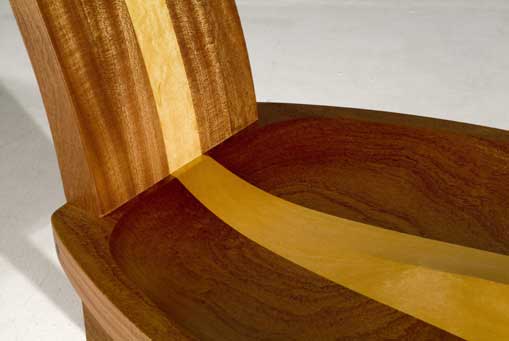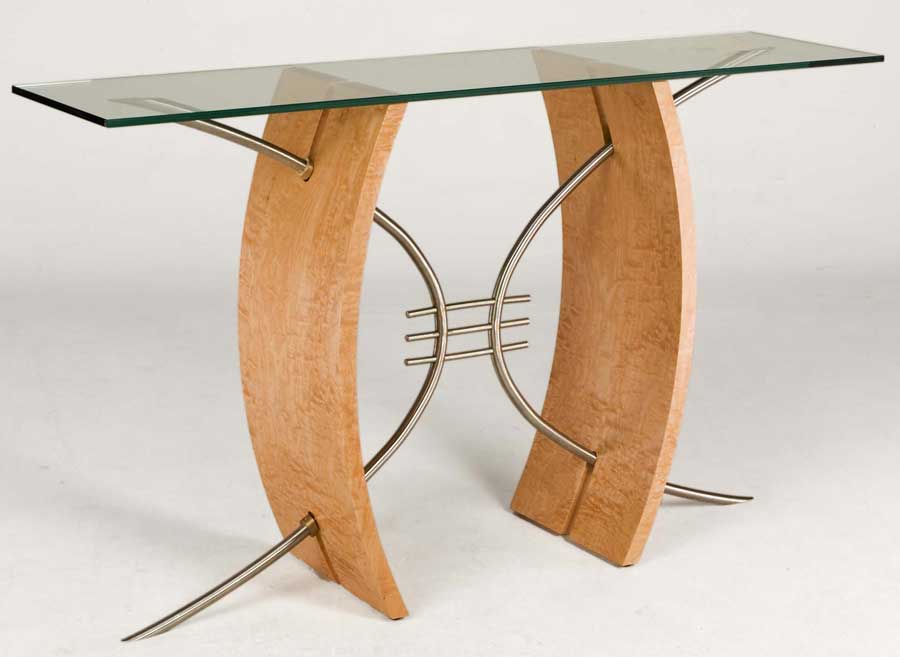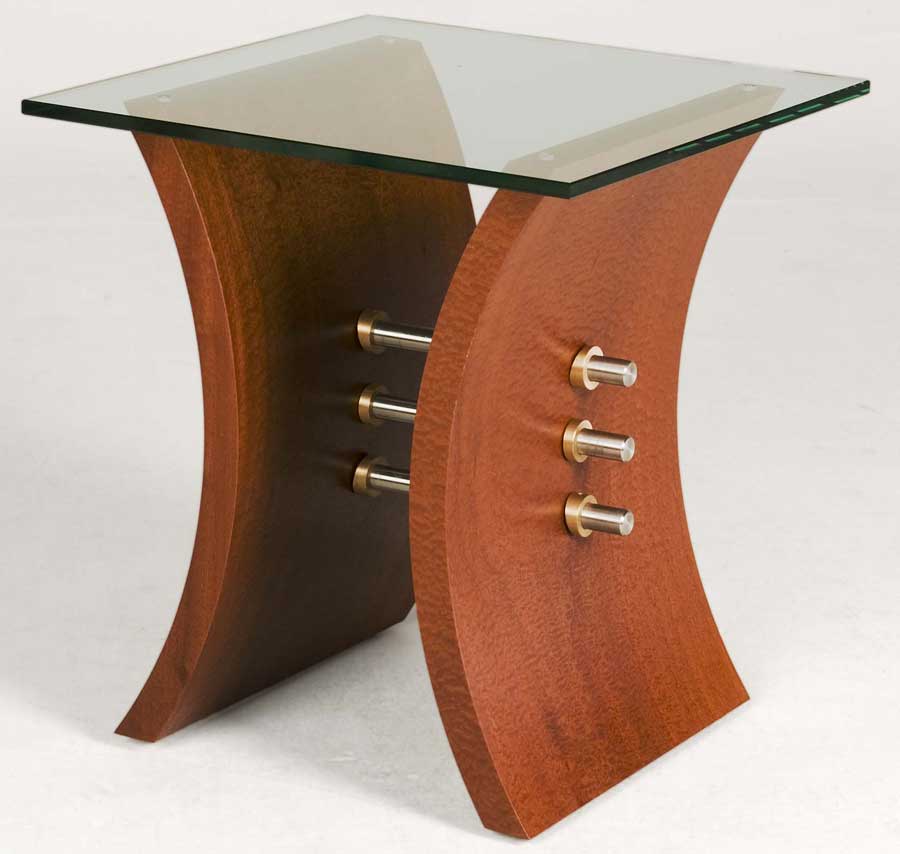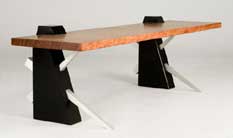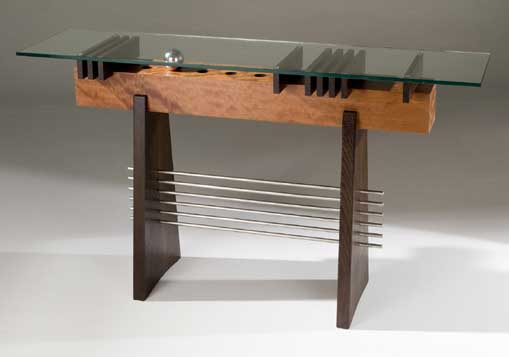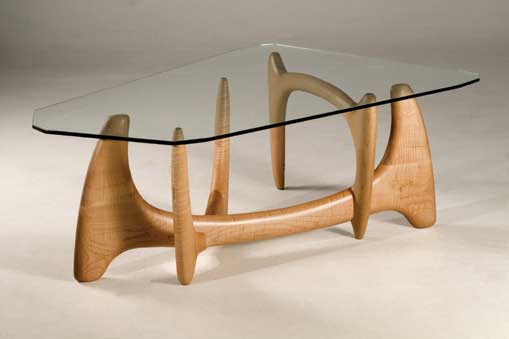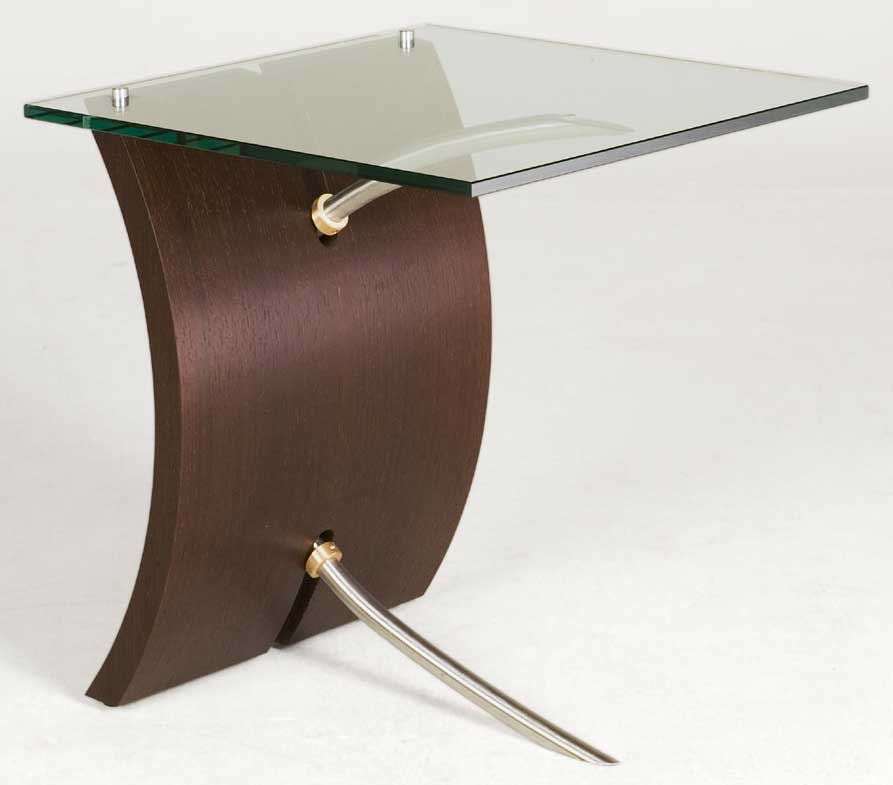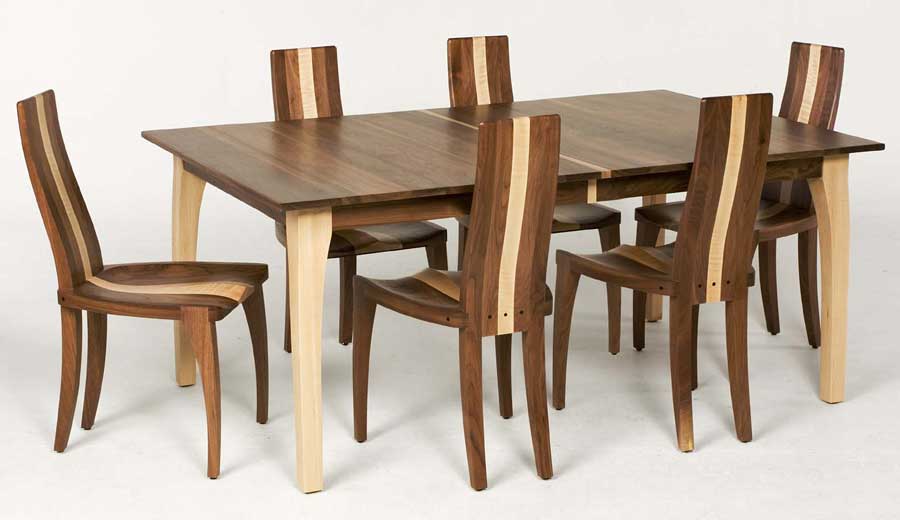
Nathan Hunter certainly got an early introduction to woodworking, and eventually became a designer and builder of fine furniture. However, that does not mean there was a straight path from his first exposure to his current love. Music and film both got in their licks before woodworking managed to lure him back.
“My father was a fairly serious hobby woodworker,” Nathan explained, “and I grew up with the tools and techniques of furniture making. From the time I was 12, though, my intended career trajectory was as a concert pianist. I was a music performance major initially in college, but switched to film studies as I started to get more interested in the visual arts.
“After college, I started working with a neighbor who was an independent contractor doing painting and light remodeling. While with him, I suggested a few additional projects for some of our clients. The first job I got was a cedar fence, followed by an arbor and eventually others. Before long I suggested some furniture, and one of our clients hired me to create it. Even though I had never before designed anything, I sketched up some ideas and the client went for it.
“In 2004, I packed up my wife and child and we temporarily moved back to my parents’ home to take advantage of using my father’s woodworking shop. At the time, I did not have a shop. During my time there I made a bunk bed, a coffee table and a mantle. When we returned home, I set up a rudimentary shop in my oversized two-car garage.
“After finding some incredible olive wood at Hearne Hardwoods, I pitched the idea of turning it into a dining table to the client who had bought my first pieces. I did that by showing her a picture of the wood. The reason I needed a commitment up front was because the two planks I planned on using were $1,500 each. She bit not only on the table, but also asked me to design and build 12 chairs to go with it. I had never designed a chair, but took on the task anyway. Clearly, she had an outrageous amount of faith in me. Fortunately, she loved what I did, and the chair I designed has since become my best-selling piece.
“The following year, almost to the day, she called and asked for another table and six more chairs. The money from that job helped me set up a better shop, and I was off and running. Once the order was done, I had some good photos to use to promote my work, and opened a website in 2005. I started doing furniture shows along the East Coast, and to this day, most of my work comes through that venue. Along with one employee, I still work out of my garage shop, though at the moment it feels like we are bursting at the seams.
“As far as design is concerned, I like to find a central idea and build it into an iconic image, creating something functional while still keeping the lines simple and clean. For instance, a coffee table I designed for that first customer incorporates three differently sized U-shaped elements in either upward or downward orientation.
“My Parabola Hall Table started with a curved panel intersected by a parabolic piece of metal in the opposite direction. That eventually spun off to other designs using some of the same elements. The Chopstick Bench started as the image of a pair of crossed chopsticks sitting on a plate. The black base holds the aluminum chopsticks, which are the focus of the piece, and they both hold up the top and contact the ground.
“The most complex piece I’ve done, in terms of imagery, is what I call the Pi table. It started with a stainless steel ball, which came to represent both the decimal point in pi and the fact that pi is the constant used in the relationship between the diameter and circumference of a circle. From there I added vertical blocks to represent the first four numbers of pi (3.141), and five divots in the top bar to represent the next number, five. The sum of these vertical support blocks represents the next number in pi (9) and the base of two supports and six stretchers represent the next two digits (2 and 6). Looking at it as a whole, the parts of the table ‘read’ 3.1415926, the first 8 digits of pi. I’ve sold about five of them so far, and both building and explaining them at shows has been a lot of fun.”
Designing and building fine pieces is not enough for Nathan, though. There is also the issue of stewardship. “Part of my approach to design,” he explains, “involves the materials I use. Every time we use a tree, we have a responsibility to renew and care for the forest. We must harvest carefully and replenish fully in order to continue our symbiotic and nurturing relationship with the environment. To this end, I offer wood certified by the Forest Stewardship Council, and am committed to converting exclusively to certified lumber in the near future.
“I feel extraordinarily lucky being in the position I am in,” Nathan ruminated. “Being able to create something for someone else is a great privilege, and one that allows you to give something of yourself to another.”
